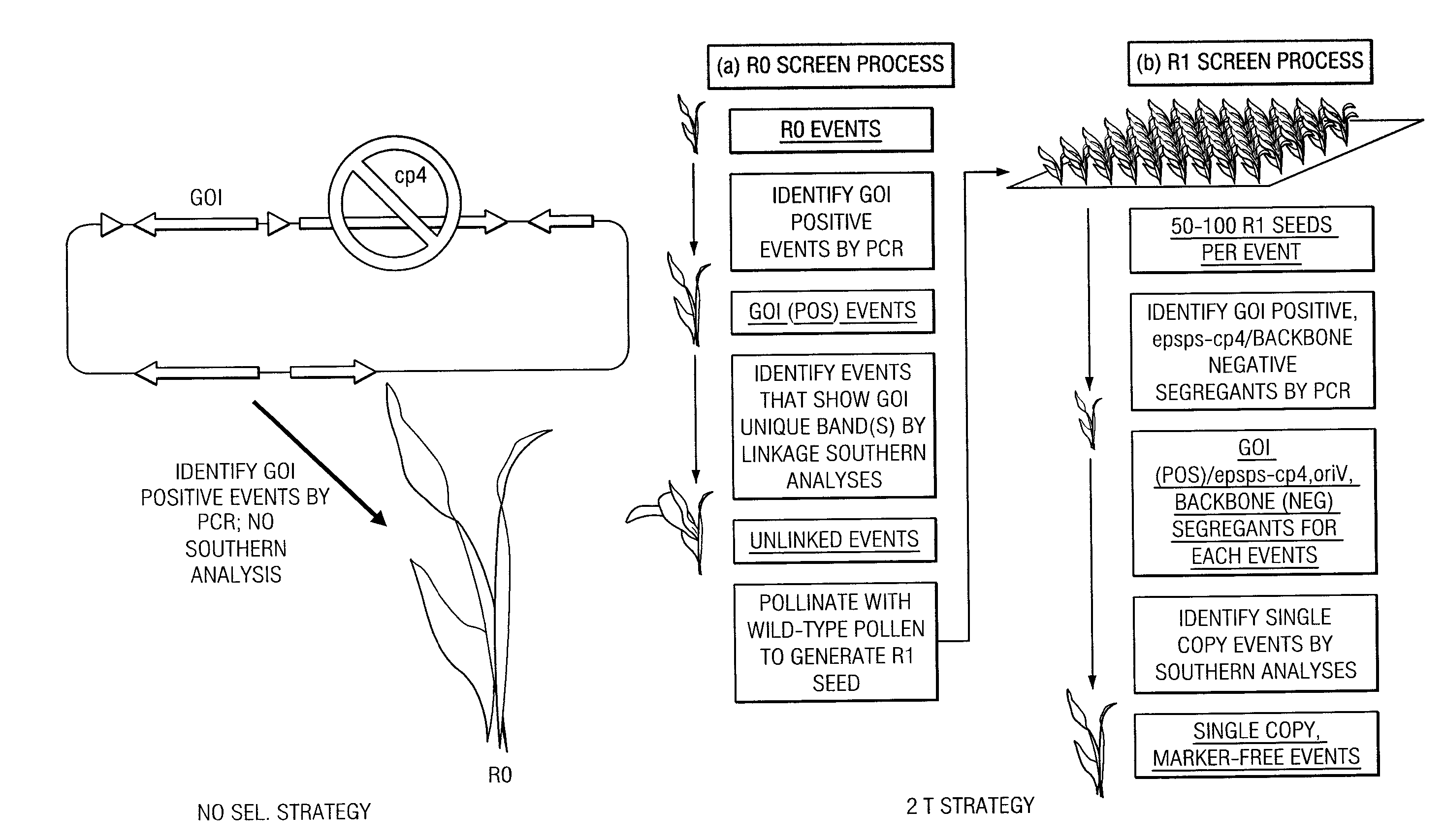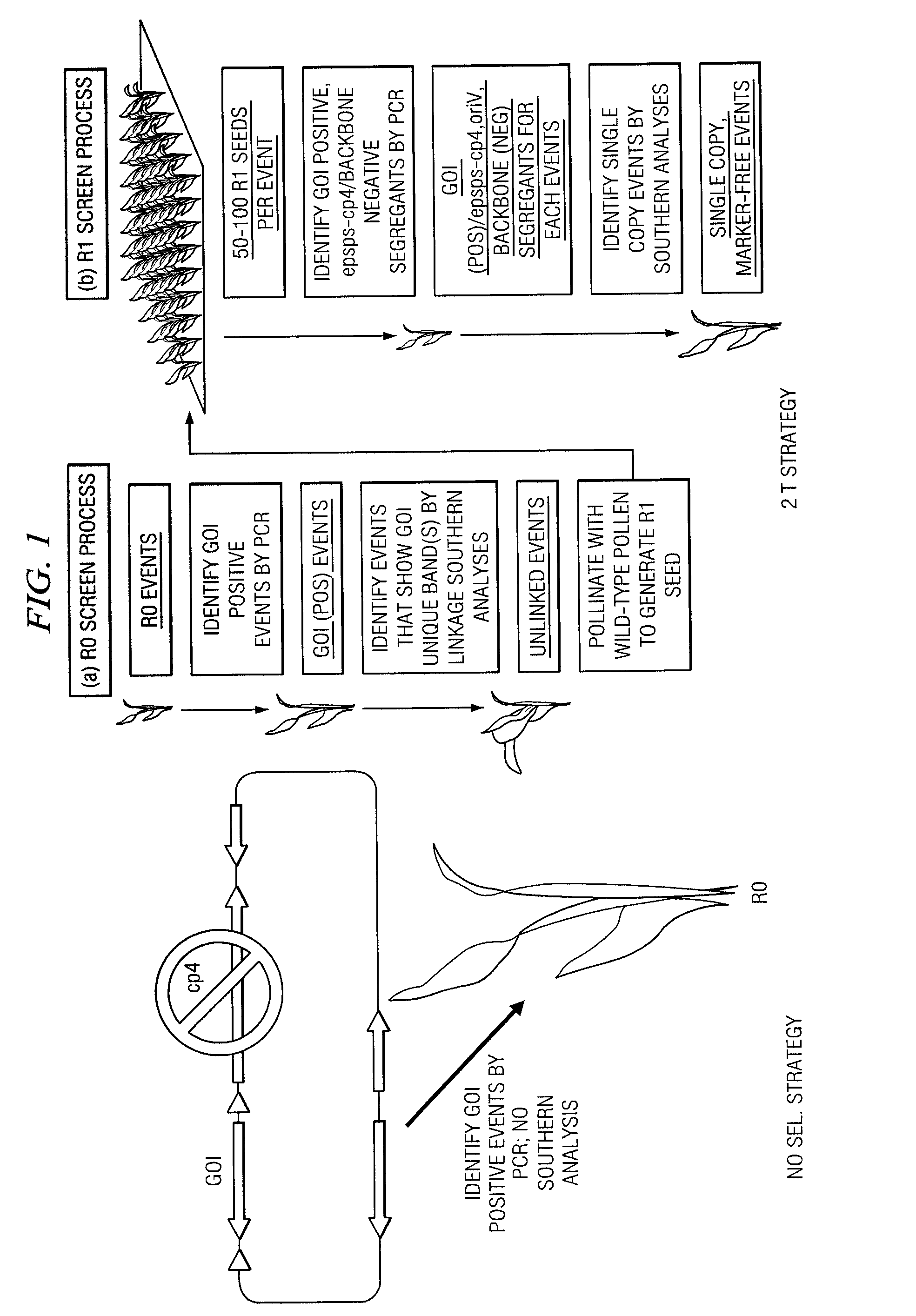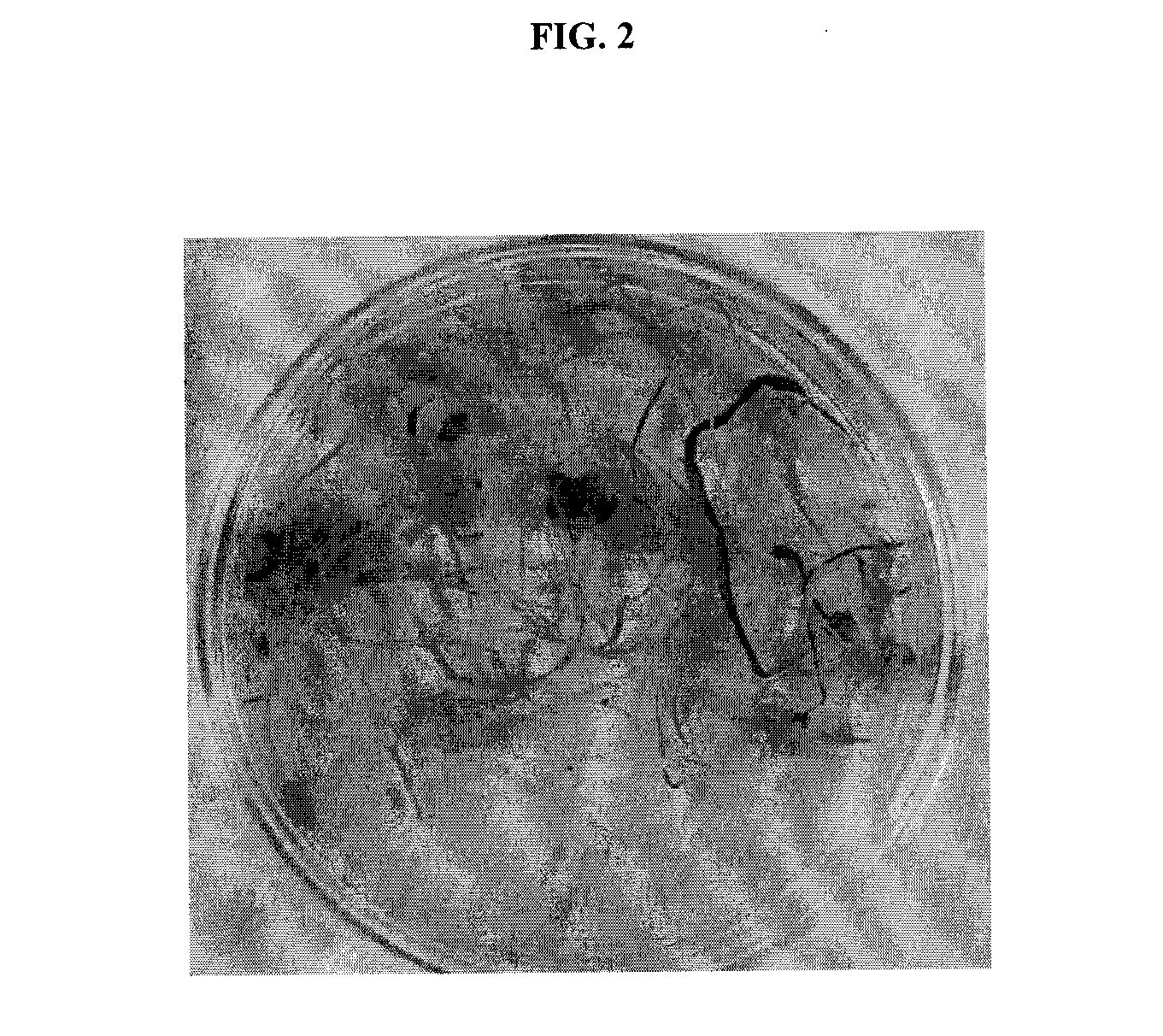Plant transformation without selection
a plant and transformation technology, applied in the field of plant biotechnology, can solve the problems of time-consuming and inefficient systems, complicated subsequent analyses and product development efforts, and inability to select plants,
- Summary
- Abstract
- Description
- Claims
- Application Information
AI Technical Summary
Benefits of technology
Problems solved by technology
Method used
Image
Examples
example 1
Marker-Free Transformation
[0068] Transformation of regenerable immature corn embryos may be performed via a Rhizobia-mediated protocol, e.g. as generally described by Cai et al. (U.S. Patent Application Publication 20040244075). In particular, a modified Agrobacterium-mediated method was used. Immature embryos with a size range of 1.9-2.5 mm, for instance about 2.3 mm, were selected from corn ears and co-cultivated with an ABI Agrobacterium strain C58 to mediate the transfer of DNA into the plant cells containing the recombinant construct of interest, for instance pMON93040 containing both GUS and CP4 EPSPS under the expression control of an actin promoter, to allow for both visual analysis of transformed cells and sectors, and to allow for use of a Weathermax™ glyphosate spray as a surrogate for a later, post-regeneration screen followed by a confirmation test by a PCR-based screen for transformed plants. Larger embryos, e.g. about 2.5 mm or up to about 3.2 mm in size, may also be...
example 2
Efficient Development of Transgenic Sectors without Selection Pressure during Callus Proliferation
[0069] A system for efficient regeneration of transgenic plants in the absence of a selection agent was developed. Following co-culture of an explant with Agrobacterium (4 days on Lynx 1898 medium (Table 1), callus proliferation commenced on Lynx 1316 (Table 1), for 10-14 days, without selection. Next, pre-regeneration of callus tissue was performed for 10 days on Lynx 1844 medium (Table 1), followed by regeneration on Lynx 1344 (Table 1) for 10 days, and Lynx 1471 for 3 weeks (Table 1). All steps except for culture on Lynx 1471 were performed without use of a selective agent; thus callus growth and plant regeneration occurred without a selective agent for about 4 weeks after co-cultivation. Growth of regenerating plants in the last step, on Lynx 1471, was performed in the presence of a low level of glyphosate (0.02 mM, v / v) to estimate the maximum possible transformation frequency. Pr...
example 3
Additional Corn Transformation and Regeneration Experiments, and Screening of Putative Transformed Plants
[0071] Three more studies were performed to confirm that efficient regeneration of transgenic sectors was routinely possible without applying selection at any stage. The plasmid used was pMON93040, described above. Following co-culture on Lynx 1898 for 1 day, callus proliferation was performed on Lynx 1316 for 10 days, pre-regeneration on Lynx 1844 for 10 days, and regeneration on Lynx 1344 for 3 days, followed by growth on Lynx 1607. A single corn ear was used to isolate the embryos for each experiment, and the embryos ranged in size from 2.8-3.2 mm. In two of the studies, embryo inoculation was performed directly isolating embryos into Agrobacterium suspension at O.D.660=1.0, while in the other study embryos were first isolated into 1 ml of liquid Lynx 1013 medium (1 Liter: MS Basal Salts (Phytotech): 2.165 g; MS Vitamins (100×; Phytotech): 10 ml; Sucrose (Phytotech): 68.5 g; ...
PUM
| Property | Measurement | Unit |
|---|---|---|
| Length | aaaaa | aaaaa |
| Length | aaaaa | aaaaa |
| Time | aaaaa | aaaaa |
Abstract
Description
Claims
Application Information
 Login to View More
Login to View More - Generate Ideas
- Intellectual Property
- Life Sciences
- Materials
- Tech Scout
- Unparalleled Data Quality
- Higher Quality Content
- 60% Fewer Hallucinations
Browse by: Latest US Patents, China's latest patents, Technical Efficacy Thesaurus, Application Domain, Technology Topic, Popular Technical Reports.
© 2025 PatSnap. All rights reserved.Legal|Privacy policy|Modern Slavery Act Transparency Statement|Sitemap|About US| Contact US: help@patsnap.com



